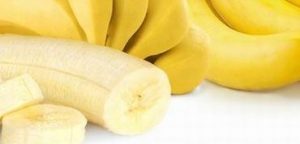[nextpage]
What is a negative calorie food? A food that causes you to burn more calories digesting it than the calories it contains. These foods also pack a wallop of nutrition, water…and in this list, flavor.
[/nextpage]
[nextpage]
1. Kale

This dark green leafy vegetable is low in saturated fat, very low in cholesterol and provides a good source of fiber which is like sending a scrub brush through your digestive track. Kale also packs protein which is a building block for your bones, muscles, skin, and blood…and fills you up faster. The thiamin (vitamin B1) kale contains helps maintain a healthy nervous system, improves cardiovascular functioning and breaks down fats. You’ll also get a good dose of riboflavin (vitamin B2) which helps your body convert food into usable energy. One serving of nutrition-packed kale delivers 33 calories. That’s about the calorie count of three (3) potato chips.
[/nextpage]
[nextpage]
2. Grapefruit

Grapefruit grows on trees, has a thick skin to protect the edible flesh from pesticides and is loaded with 120% of the recommended daily value of vitamin C. This vitamin helps ward off colds, helps sores to heal faster, and helps delay wrinkles from forming in skin. Grapefruit is also high in vitamin A which helps to maintain healthy teeth, bones, soft tissue, white blood cells, the immune system and mucus membranes. When you eat grapefruit, you don’t have to worry about cholesterol or sodium, plus it will clean out your insides as the fleshy part of the fruit is a good source of dietary fiber. This tart citrus treat also delivers a lot of water. 60% of the fruit is water which will give you that “full” feeling. The natural sugar can give your energy a boost which makes it an ideal mid-day snack, but the sugars boost the calorie count to a still-reasonable 97, just more than eating two (2) Oreo cookies.
[/nextpage]
[nextpage]
3. Celery

Each stalk of this plant is stuffed with nutrition and water. About 75% of celery is water which, when consumed, helps to hydrate your body and satisfy your desire for more food. Celery also provides riboflavin which is important for your body’s energy production but cannot be stored in the body, making it essential to consume. The vitamin A in celery is important for brain function and for the production of hormones like serotonin and norepinephrine, which affect mood. There’s also phosphorus which are also help your bones and teeth; magnesium which keeps your heart beating in a steady rhythm and wards off headaches; and vitamin K which is vital for allowing your blood to clot when necessary. Each stalk contains a measly 6 calories, and one crunch-filled serving is three stalks.
[/nextpage]
[nextpage]
4. Watermelon

Eating watermelon on a hot summer day (or anytime) will quench you with its hydration content. This fruit is about 92% water! It’s also high in the recommended daily value of vitamins A and C. If you eat one wedge, you’ll get about 1/3 of the recommended amount of these vitamins that also double as antioxidants—and that’s bad news for any nasty free radicals cruising around your body. The vitamin A goes to battle against skin ailments like acne, eczema, and psoriasis. And the vitamin C helps your skin retain its firmness and protects the skin from drying out and developing wrinkles. The juicy fruit also contains potassium, and this mineral helps your muscles, including your most important muscle: your heart. One slice does pack a whopping (sarcastic) 46 calories. That’s the same as half a normal size biteof a Snickers bar.
[/nextpage]
[nextpage]
5. Broth

Did you ever consider eating soup without the ingredients? It’s highly nutritious, low in calories, and exceptionally satisfying. It’s simple, too! Fill a pot with water, add your favorite tasty vegetables and the meat of your choice: beef, chicken, turkey or if you prefer, leave out the meat. When you cook the concoction, the flavor of the ingredients seeps into the water. But that’s not all, the vitamins and minerals fortify the water, also. In the end, you’re left with a low-cal bowl of liquid that is full of flavor and nutrients. For instance, a bowl of broth made with beef and veggies yields a large amount of vitamin A, and this vitamin helps your skin. It is also important for normal vision, reproduction, the immune system and it helps the heart, lungs and kidneys to do their jobs. One belly-filling bowl of broth is 80 calories, similar to half of a snack-size bag of Doritos.
[/nextpage]
[nextpage]
6. Apples

An apple a day…will give you 10% of the vitamin C you need as well as a 12% of the recommended amount of fiber your body needs. You’ll also get an impressive dose of phytonutrients and antioxidants, believed to help reduce the risk of developing cancer, hypertension, diabetes, and heart disease. These nutritional powerhouses pack pectin which helps prevent plaque buildup in blood vessels, calcium and phosphorus to keep your teeth and bones strong, iron which helps metabolize proteins and plays a role in producing hemoglobin and red blood cells, and potassium to keep your heart pounding optimally. Some believe that eating three apples a day for two days will detoxify your body. Before you try this, talk to your doctor. Otherwise, pick up a red, green, or yellow apple the next time you want a snack. One apple has 1/5 the calories of a soft pretzel. An apple or two will fill you faster and keep you satisfied longer…while delivering a boatload of nutrients.
[/nextpage]
[nextpage]
7. Oranges

These citrus fruits come in their own carrying case (the peel) and provide a ton of satisfying snack power…and vitamin C. As an antioxidant, this vitamin is capable of blocking some of the damage caused by free radicals, as well as protecting your body from infectious agents. They also have healthy amounts of vitamin A which is essential for bone growth and skin health. The thiamin in oranges helps you digest food better, especially proteins and fats. The fibrous packs housing the juice provide an ample amount of dietary fiber to clean your digestive track while the calcium oranges contain keep your bones and teeth strong. Oranges do have 17g of sugar, and that bumps their calorie content to 85, just more than one delicious but not-filling chocolate chip cookie.
[/nextpage]
[nextpage]
8. Dairy Foods

Dairy foods, like yogurt and cheese, are packed with protein, and protein fills you up faster than other food sources. Although a cup of plain, skim milk yogurt may deliver 137 calories, it will not leave you looking for more food to eat. Dairy also has calcium, and this mineral regulates how fat is stored and broken down by the body. A study of obese individuals showed that the half of the study group that ate a dairy-rich diet lost almost double the amount of body fat and weight as the other half who ate the same amount of calories but consumed much less dairy. This food group also contains conjugated linoleic acid (CLA) and whey. Whey helps the body burn more calories and CLA is believed to burn fat.
[/nextpage]
[nextpage]
9. Eggs

Another great source of satisfying protein is eggs. Research shows that people who eat eggs for breakfast tend to consume fewer calories later. Not only that, protein allows your body to burn fat by increasing your metabolism…and by working harder to break down the protein itself. In one study, people who ate eggs for breakfast ate fewer calories the next 36 hours than their bagel-eating counterparts. This is because the eggs were more satisfying than the holy round bread and for longer. Don’t worry about the cholesterol content. New studies prove the public has been misguided for decades, stating now that eggs actually help our good cholesterol.
[/nextpage]
[nextpage]
10. Avocados

Yes, these drupe fruits are high in vitamin C…and high in fat—but they’re high in the good fat: healthy, monounsaturated fats. These are good for your body. The oleic acid in avocados is thought to quiet hunger pangs, so eating an avocado is quite satisfying. And although this creamy fruit has 240 calories, it is also packed with fiber and protein, both giving bellies that “full” feeling. They also have vitamin B-6 which is believed to burn up stored calories while reducing the amount of calories needed by the body. Researchers say cooking with avocado oil, rich in monounsaturated and oleic fatty acids, can spot-reduce belly fat.
[/nextpage]
[nextpage]
11. Broccoli

A cup of chopped, raw broccoli has only 30 calories. If you cook it, the calorie count jumps to 54. Prepare it either way and you’ll be loading your body with vitamins and nutrients: vitamin A for your skin, B-6 for metabolism, C your health, and K for blood clotting. There’s also potassium for your muscles and your heart and protein which tends to fill bellies faster. Let’s not forget the water content. Broccoli is 90% water, and one cup of the vegetable provides five grams of fiber which also provides that “full” feeling, slows digestion and takes away your desire to eat more. The 54 calories in a cup of delicious and nutritious cooked broccoli is similar to eating a slice of a little Tastykake Koffee Kake Junior.
[/nextpage]
[nextpage]
12. Tomatoes

This vegetable (arguably a fruit because of its seeds) is another way to fight fat. Besides being full of vitamins A and C, tomatoes also contain a healthy supply of antioxidants and minerals that make tomatoes a nutrition addition to any sandwich or plate. Tomatoes also make the meal more satisfying. A small study showed that women who ate cream cheese sandwiches with on tomato-enriched bread were more satisfied than those who ate only white bread. It could be that tomatoes affect the ghrelin levels in our body. Ghrelin is an appetite-suppressing hormone. Add to that the impressive fiber content, and you’ve got an easy way to add nutrition, and the feeling of fullness, to your next meal.
[/nextpage]
[nextpage]
13. Cucumbers

Eating cucumbers is another way to lower your calorie intake to shed some pounds. Most of the mass of a cucumber is water, and the rest is nutrition. A single cucumber has only 8 calories, and when you eat those calories you get a good amount of vitamin K. You need this vitamin that helps your blood to clot if you are injured and bleed. You also get vitamin C and phytonutrients that provide antioxidant benefits. The seeds and skin are good sources of fiber which fills you and cleans your digestive track. Any way you slice it, eating a cucumber will boost your nutrition intake without boosting your calories.
[/nextpage]
[nextpage]
14. Coffee

The tide is turning in favor of consuming coffee. Studies show that drinking 3-4 cups a day comes with some unexpected health benefits. For one, it reduces the risk of developing insulin resistance. It also reduces the risk of metabolic syndrome and type 2 diabetes. But that’s not why you drink coffee. You drink it for the caffeine. Whether caffeinated or not, coffee can help you get rid of fat because of the Chlorogenic acid—a phytochemical found in coffee and coffee beans. This acid appears to impact how glucose is processed in the body, thus helping the body to burn fat and use it as energy. Plus, caffeinated coffee boosts metabolism by 3-11%. Calorie count of a cup of black coffee—0. That’s the same as the air we breathe. Of course, if you add milk and sugar you nullify the fat-busting effects of your cup of joe.
[/nextpage]
[nextpage]
15. Matcha Tea

Matcha is a concentrated powdered form of green tea and has been proven to fight fat and cancer. The stone-crushed tea leaves have anti-carcinogenic chemical compounds. Drinking matcha (rhymes with gotcha) inhibits cancer cell growth, and its many antioxidants help detox your body from free radicals. These little devils float through your system aiming to wreak havoc at the cellular level. As for fat burning, it’s on Dr. Axe’s list of 15 Ultimate Fat-Burning Foods. Unlike other teas, with matcha you consume the ground up tea leaves, and they boost your metabolism. A study showed that drinking larger quantities (690 milligrams) resulted in significant decreases in body fat mass, body weight and waist circumference. The tea even lowered cholesterol levels dramatically. It’s thanks to the catechins, a type of antioxidants.
[/nextpage]




